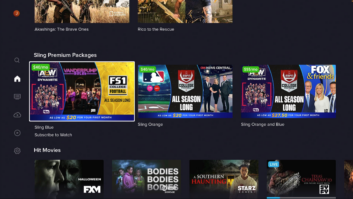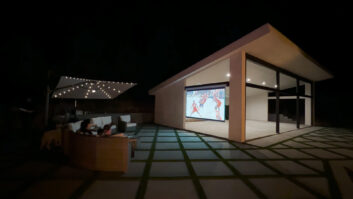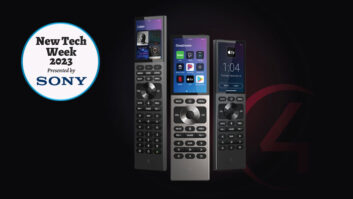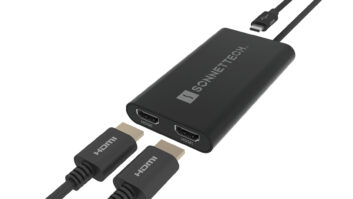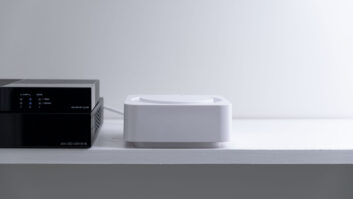Predictions for the New Product Platform’s Effect on the Channel

Gordon van Zuiden ([email protected]) is president of cyberManor in Los Gatos, California. On March 9, Apple announced that it would start shipping its new watch at the end of April with prices starting at $349. Since then, the custom integrator community has been abuzz over the tremendous potential that a widely adopted wearable device could bring to the industry.
Over the last 10 years, no other company has spurred on the custom installation community like Apple. Its initial rotary-wheel iPod revolutionized the manner in which whole-house audio companies regarded source content. Remember the in-wall iPad docking stations?
The first touchscreen iPods and iPhones revolutionized home control, when brands like Sonos and SpeakerCraft recognized that their own custom controls would never be able to compete with Apple’s easy-to-use, inexpensive, lightweight, high-resolution touchscreens. Almost every other custom installation control company followed suit with home control apps that would run on Apple’s iOS platforms–especially after the larger interface of the iPad was introduced in April of 2010.
Whenever Apple introduces a new product, the custom installation industry has no choice but to pay close attention. And when its announcement is about the release of a new product platform, it becomes mandatory to understand its implications for our business. While there is never a guarantee of success for any new product release, Apple’s phenomenal track record over the last decade forces everyone in the industry to carefully evaluate their products and services vis-à-vis Apple’s offerings; not doing so has put many companies at risk or out of business.
Peter Aylett, technical director of Archimedia, believes that the Apple Watch is an excellent example of a product as a platform, rather than as a standalone product. When the original iPhone was launched there was no App Store, he explained; people bought it anyway because it was close enough to what they knew already in a phone. Aylett thinks that the Apple Watch is different.
“It’s a new product category that the greater public will take time to adopt (Apple faithful excepted, of course),” he said. “It is a true IoE device: it will live or die by its connection to other devices around us, and the apps that are written to enable these interactions. As an ecosystem, we are at the ground floor. As the app landscape matures, iPhone users will feel that they ‘need’ an Apple Watch to best utilize the complete Apple ecosystem.”
Michael Heiss, principal consultant/analyst of M. Heiss Consulting, believes that the possibility to integrate monitoring, control, and automation devices with something in a small form factor is appealing in the macro sense, yet for some, the Apple Watch will be a status symbol that they really won’t use to its full potential.
“Particularly when the owner is a celebrity, it will give the concept of extended home control/automation apps exposure that will help grow the market,” Heiss said. “Think of the exposure for the benefits of electric vehicles that Tesla has brought to the market, even though anyone who can afford one now probably isn’t buying a one because they worry about the price of gas.”

While there is never a guarantee of success for any new product release, Apple’s phenomenal track record over the last decade forces everyone in the industry to carefully evaluate their products and services vis-à-vis Apple’s offerings Rich Green, principal of Rich Green Design, is very enthusiastic about the role that the Apple Watch could play in the channel. “At Apple’s March presentation, Kevin Lynch gave us a visceral demo of his garage door (Alarm.com) and Siri integration,” he recalled. “This is an integration boon. The new UI for the home. WiFi binding is brilliant. You can be anywhere within WiFi reach of your phone to operate the Apple Watch, not just Bluetooth range.”
As for the $10,000 Watch? This is the best news of all, according to Green. “Apple continues to set higher price points, raising consumer expectations of quality for money,” he continued. “After a $10,000 gold Apple Watch, everything else seems like a bargain. They will sell out of gold watches in no time, and whom do you think will get the calls to integrate them with home controls?”
cyberManor principal, Pat Hagerman, said that he will be watching for Apple Watch apps and supporting products for proximity sensing capabilities. “This watch should know where I am and be able to trigger events based on that,” he said. “Roomie Remote: change the remote to the room that I’m in. Lutron: know that I left a room and turn the lights off (without motion sensors) and geofencing with Lutron: know that I’m almost home and turn on some lights for me if it’s nighttime. In theory, all of this is possible now with a phone, but I don’t think it’s been developed as far as it could be because with the current use case, you can’t be certain users always have their phone with them.”
We may not know for some time (no pun intended) which, if any, of these assessments and predictions will come true. What we do know is that our client base will be asking us what we think of the new Apple Watch, and does it make sense to offer this product as part of the integrated custom electronic solutions we install in their homes. Those custom installers best informed about the watch’s strengths and weaknesses, bolstered by the advice of CEDIA’s technology council and coupled with their own assessment, will be in the strongest position to serve their clients’ needs when the watch is released at the end of this month.


